Fishes
Media

Species Types
Scientific Name
Moxostoma erythrurum
Description
The golden redhorse is a smaller-bodied sucker with large scales and a short dorsal fin. It occurs in Ozark and northeast Missouri streams.
Media
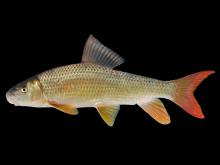
Species Types
Scientific Name
Moxostoma carinatum
Description
The river redhorse occurs throughout the Ozarks but is seldom common. It inhabits pools of clear, medium-sized to large streams with gravelly or rocky bottoms and continuous strong flow.
Media

Species Types
Scientific Name
Moxostoma macrolepidotum
Description
The shorthead redhorse is the most widely distributed redhorse sucker in Missouri, occurring nearly statewide. No other Missouri redhorse is as adaptable in its habitat requirements. Many specimens have a pea-shaped swelling on the upper lip.
Media
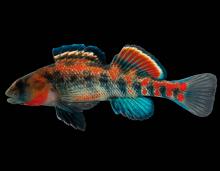
Species Types
Scientific Name
Etheostoma, Percina, Ammocrypta, and Crystallaria spp.
Description
Darters have been described as the hummingbirds of the fish world: colorful, small, and quick. Missouri has about 44 different types of darters. They are most diverse in the fast, clear, rocky streams of the Ozarks.
Media
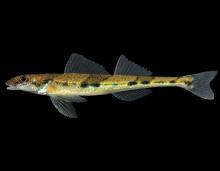
Species Types
Scientific Name
Crystallaria asprella
Description
The crystal darter is Endangered in Missouri. Formerly known from many river drainages in the east-central and southeastern parts of our state, this pale, very slender darter apparently now lives only in the Gasconade and Black rivers.
Media
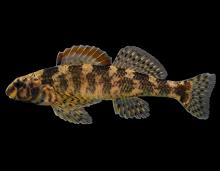
Species Types
Scientific Name
Etheostoma histrio
Description
In Missouri, the harlequin darter occurs only in our southeastern lowlands, in flowing streams and ditches with sandy bottoms. It is State Endangered because its small numbers and limited range make it vulnerable to extirpation.
Media
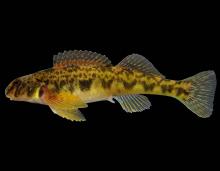
Species Types
Scientific Name
Etheostoma blennioides
Description
The greenside darter is one of our largest darters. It has olive to yellow sides and back with scattered red spots and vertical blotches often arranged in a V or W pattern. It is one of the most abundant and widespread darters in the Ozarks.
Media
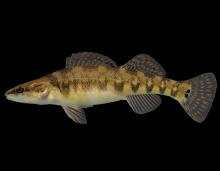
Species Types
Scientific Name
Etheostoma nianguae
Description
Two small black spots at the base of the tail fin distinguish the Niangua darter from all other darters in Missouri. Known from only a few tributaries of the Osage River, this dainty, colorful fish is a nationally threatened species.
Media

Species Types
Scientific Name
Pimephales promelas
Description
The fathead minnow has a blunt, rounded snout, rounded fins, a dusky stripe along the side, and a spot at the base of the tail fin. It is most abundant in pools of small prairie creeks because it tolerates rather high temperatures, extreme turbidity, and low oxygen.
Media
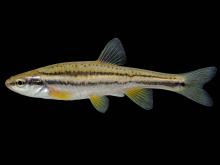
Species Types
Scientific Name
Chrosomus erythrogaster (formerly Phoxinus erythrogaster)
Description
The southern redbelly dace has two dusky stripes separated by a broad golden stripe along the side. The bellies of males turn brilliant red in spring. It lives in small creeks and spring branches of the Ozarks with permanent flow of cool, clear water and a gravel or sand bottom.
See Also


Media

Species Types
Scientific Name
Amphiuma tridactylum
Description
The three-toed amphiuma is an eel-like, completely aquatic salamander. It has very small forelimbs and hind limbs, each with three tiny toes. In Missouri it’s found only in the Bootheel region.
Media

Species Types
Scientific Name
Siren intermedia nettingi
Description
The western lesser siren is an eel-like, aquatic salamander with external gills, small eyes, small forelimbs with four toes, and no hind limbs. In Missouri, it’s found mostly in the Bootheel and northward in counties near the Mississippi River.
About Fishes in Missouri
Missouri has more than 200 kinds of fish, more than are found in most neighboring states. Fishes live in water, breathe with gills, and have fins instead of legs. Most are covered with scales. Most fish in Missouri “look” like fish and could never be confused with anything else. True, lampreys and eels have snakelike bodies — but they also have fins and smooth, slimy skin, which snakes do not.





















